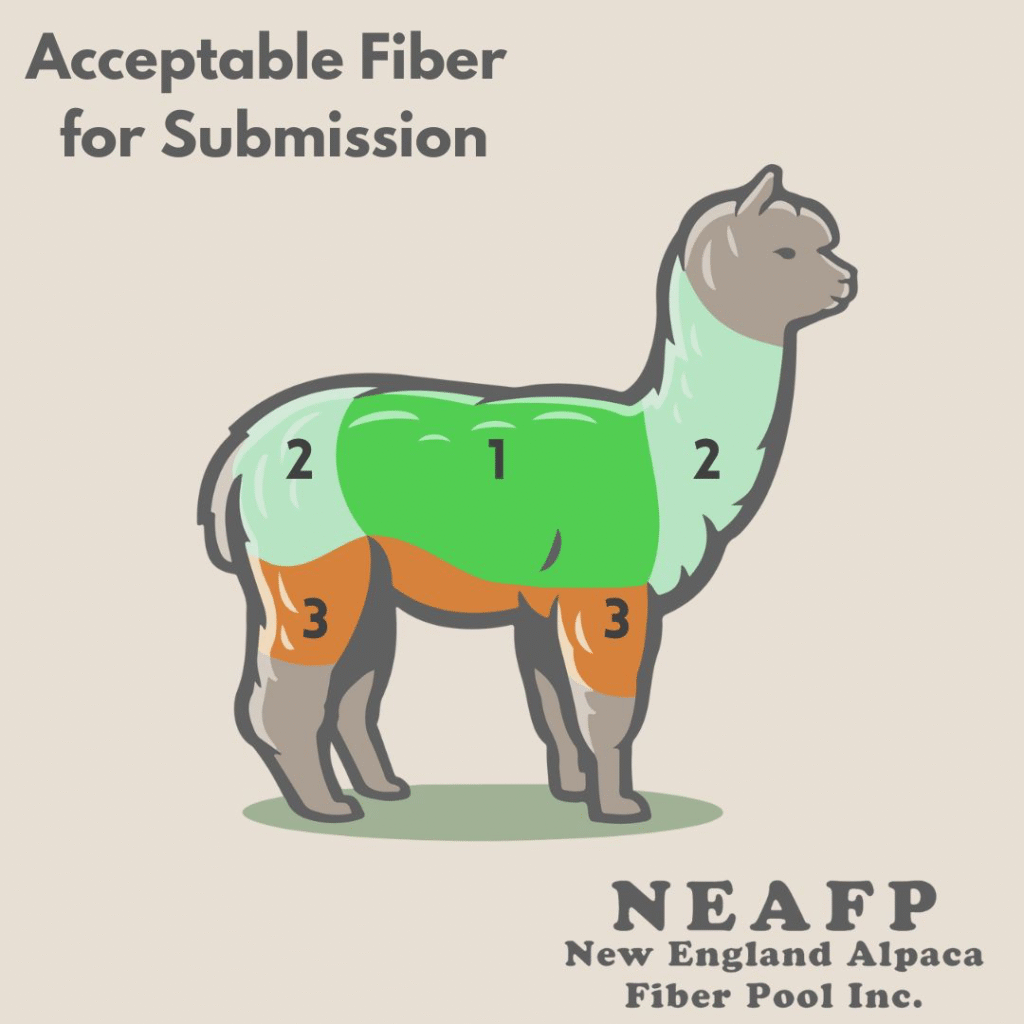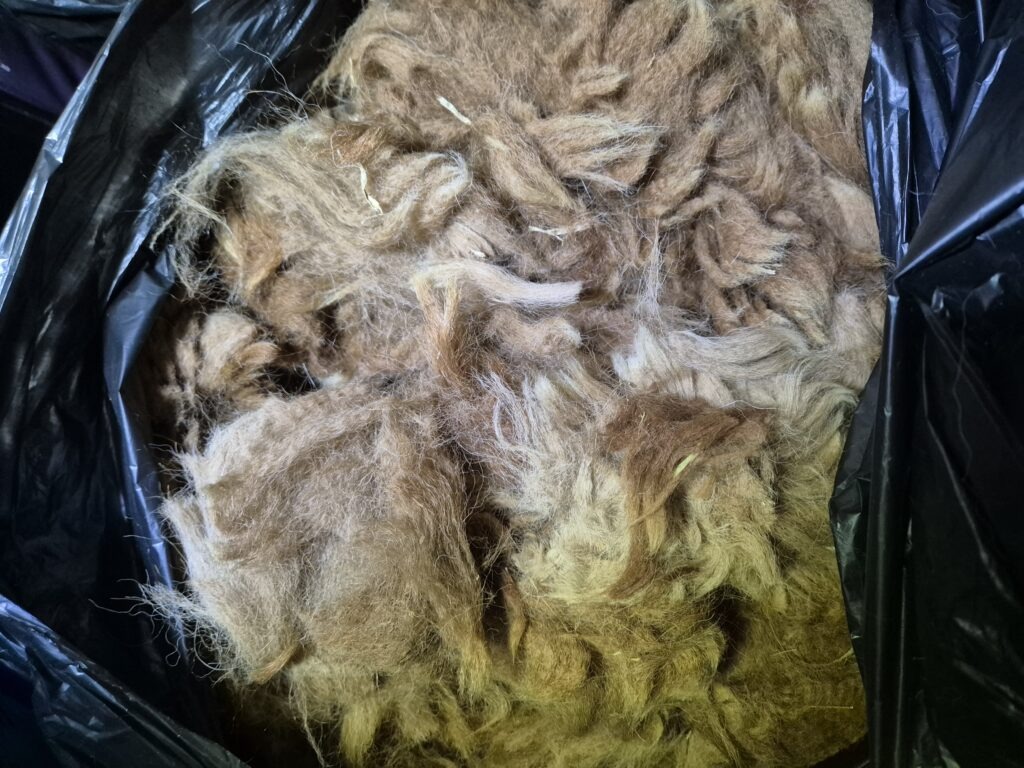From Cloud-Soft to Rugged: Discovering the Two Sides of Alpaca Fleece
I’ve been given a few gorgeous alpaca fleece – some of it is so soft it’s like running your fingers through a warm summer cloud. But there is also the coarser hard wearing section.
The Two Personalities of an Alpaca Fleece
When an alpaca is sheared, the softest, finest fibre comes from its back and sides – the area we call the blanket. This is the prime cut, prized for its silky feel, long staple length, and beautiful crimp. It’s perfect for anything worn next to the skin.
Then there’s the second cut from areas like the neck, belly, and legs. This fibre tends to be shorter, coarser, and a bit less uniform. It’s not worse – it’s just different – and it’s wonderfully strong, making it perfect for hard-wearing projects.
Above: The green area is the soft, prime blanket fleece; the other areas produce the more rugged secondary cuts.
The Crucial Step at Shearing
The blanket and second cuts must be kept separate at the time of shearing.
If they get mixed together – even a small amount – it’s almost impossible to sort them apart afterwards. You lose that beautiful, uniform handle in the prime fleece, and the coarser fibres will show up in the softer batch. A good shearer will bag the blanket separately before touching the rest of the animal.
Why the Difference Exists
Alpacas grow two main types of fibre:
- Secondary fibres – fine, soft, and crimped (these make up most of the blanket)
- Primary fibres – coarser guard hairs that offer weather protection (more common in the leg, belly, and neck regions)
The blanket area has a high proportion of fine secondary fibres, while other areas contain more primary fibres, leading to a firmer feel.
What I’m Going to Make With Mine
I’ll be using the two qualities separately so each shines in its own way:
- Cloud-soft blanket fleece: I’ll wet-felt some of this and show you how strong yet dreamy soft it is and give you ideas what it can be used for. As well as peg looming some into thick lush items.
- Rugged secondary cuts: I’ll wet -felt some of this to show you how difference this ends up wet felted. I will also show you the coarser sections peg-loomed into rugs, something hard wearing and lush, but not what you would want to sit on.
By using the same alpaca in two ways, you’ll be able to see and feel the difference in the finished work.
Want to See the Process?
If you’d like, I can photograph each stage – from sorting the fleece to felting and weaving – so you can watch these two very different personalities take shape. Imagine… one alpaca, two textures, and two completely different finished items!
Which would you be more excited to see first – the soft, luxurious felt piece or the strong, rustic floor mat?



